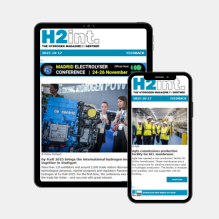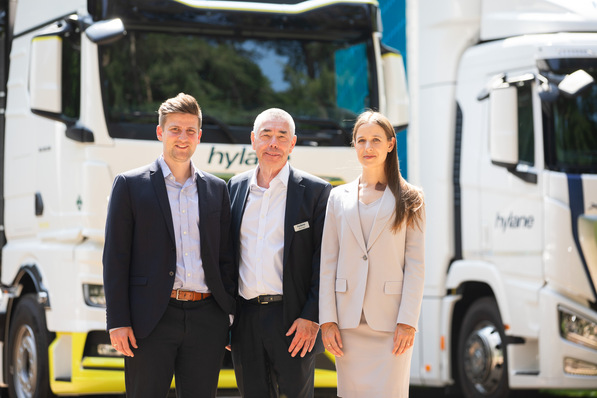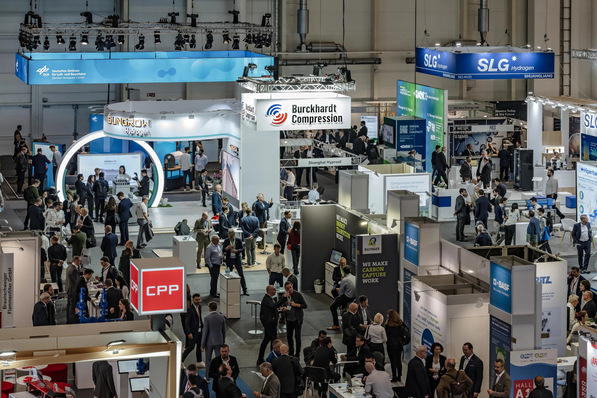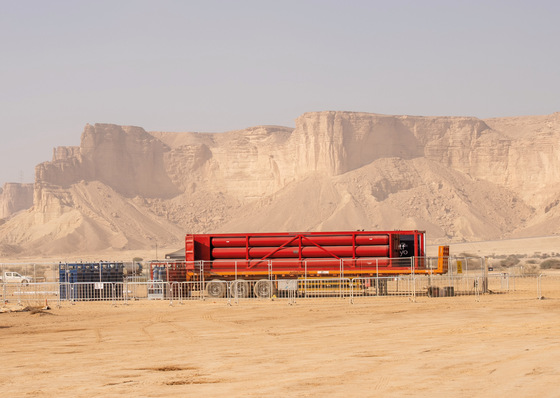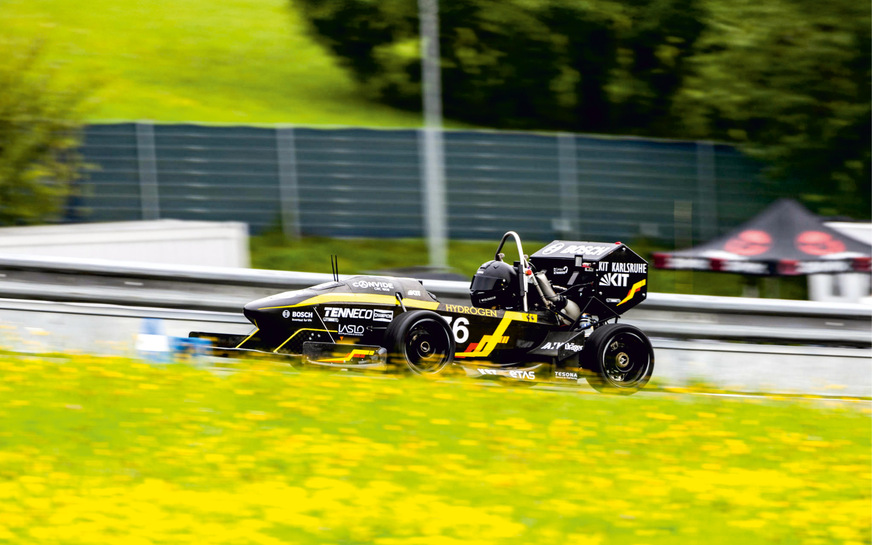
© FSA
The atmosphere at the racetrack is already something special: “Of course, everyone wants to get the most out of their own car, but if a screw is missing, you can easily ask another team for help,” says Jasmijn Oude Nijhuis, spokesperson for the HyDriven Twente team from the Netherlands. This combination of healthy rivalry and collaboration makes Formula Student an inspiring learning and testing environment for students from around the world.
The Dutch team’s technology differs from that of the other participating teams. “It was a unique experience to take part as the first and only hydrogen fuel cell car, but it was also true for the competition itself, as a new race car and a new fuel require an entirely new set of rules,” she says, describing the challenge they had to overcome.
Ultimately, it is the responsibility of each team to ensure that their car is approved for competition. This makes the event both intense and educational. Every mistake becomes immediately visible, every decision counts. Nijhuis believes hydrogen is a serious option for the energy transition: “Our goal is to make this technology visible and to inspire others to explore new and sustainable solutions.”
Hydrogen refueling station with up to 350 bar
The race took place at the end of July 2025 at the Red Bull Ring in Spielberg, Austria. With 58 teams and a record number of 1,800 participants from 16 countries, the event was already a success. For the first time, two race cars powered solely by hydrogen took to the track. Another highlight: the newly installed hydrogen refueling station with up to 350 bar, which the organizers set up and commissioned in just 20 hours – including a test refueling.
“Two years ago, we started the H2 Concept Challenge to prepare Formula Student teams for the new H2 project and to develop a new set of rules,” explains Steffen Schmitt, Head of Hydrogen Formula Student Austria (FSA). The HyDriven Twente team competed with a fuel cell. As the second H2 team, Ka-RaceIng from Karlsruhe converted an existing race car from E85 to hydrogen.
FSA sees itself as a design competition that trains future engineers – combustion engines are therefore still permitted. “We want to be as open to technology as possible,” emphasizes Schmitt. However, the combustion engines are CO2-neutral in balance, as they are powered by synthetic fuels or green hydrogen. “Over the past three years, we’ve had a steady number of participants in the Hydrogen Concept Challenge, where teams can present their future hydrogen-based powertrain concepts to technical experts,” Schmitt reports.
Some of the participants also have concrete plans to build a hydrogen-powered car. Currently, at least three additional teams are in the process of acquiring a hydrogen tank for their future hydrogen combustion engine or at least have a budget for it. They are currently in the selection process. “We expect three to five combustion engine teams and one to two fuel cell vehicles in 2026.”
H2 race car weighs 55 kilograms more
The race car from Ka-RaceIng not only impressed its own team. The goal of the Karlsruhe team was to present a hydrogen-powered combustion engine. In the end, the car was able to participate in all dynamic disciplines of the competition. Particularly surprising was the relatively low overall weight of the vehicle. It weighed only around 220 kilograms. “You have to keep in mind that the hydrogen tank and an additional frame structure designed to protect the car in the event of a crash added about 55 kilograms compared to a conventional combustion engine from 2019,” explains Schmitt. The Karlsruhe team demonstrated that constructing a hydrogen vehicle with an acceptable total weight is possible.
Converting an existing race car with a conventional combustion engine to hydrogen operation requires partners who provide materials or financial support, with the hydrogen tank and safety components such as on-tank valves (OTV) being the most expensive parts. “A completely new build would cost in the six-figure range, so we allow the use of existing chassis in the Hydrogen Rules,” says Schmitt. This is intended to lower the entry barrier for teams – allowing participants to focus on the necessary modifications for hydrogen operation and the implementation of the powertrain and tank.
However, placing the 350 bar tank was a challenge for both teams. HyDriven Twente opted for structural side pods, with the hydrogen tank on one side and the high-voltage battery on the other. Ka-RaceIng removed the existing rear wing and installed a crosswise frame structure at the rear to house the hydrogen tank. Overall, sourcing a hydrogen tank certified to automotive standards with a two-kilogram capacity was another challenge for the participating teams.
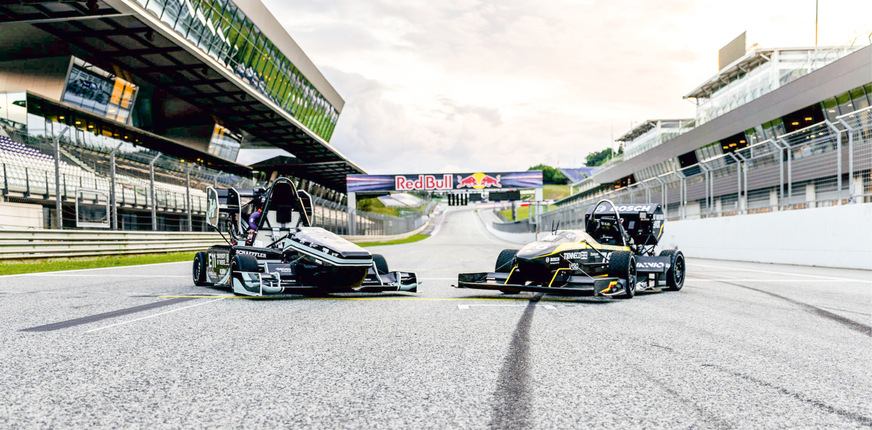
© FSA
New rulebook for H2 race cars
For the organizers, creating a new rulebook for the competition with appropriate boundary conditions, as well as providing hydrogen and refueling infrastructure, was both a challenge and uncharted territory. “In addition to the 140 pages of the Formula Student Rules, we worked with five other events last year to develop and publish the 40-page Hydrogen Rules,” explains Schmitt. These cover all hydrogen-specific topics, from the standard and size of the hydrogen tank, to all additional sensors that teams must integrate into the so-called shut-down circuit, to regulations for structural side pods.
The refueling infrastructure was implemented with the company Maximator Advanced Technology, and the utility Wiener Energie provided a trailer with green hydrogen. FSA is the first racing event at the Red Bull Ring where H2 vehicles compete. Future races can now build on proven safety concepts.
The teams also have a lot to learn. In cooperation with LIFTE H2, the organizers offer a Hydrogen Safety Officer (HSO) training course. Participants learn how to handle hydrogen safely and gain basic knowledge about hydrogen tanks, valves, and other safety components. Compared to fuel cell vehicles, combustion engines pose significantly fewer technical challenges.
Vehicle details must be submitted in advance
In preparation for the race, teams must submit the Hydrogen Safety File (H2SF). In this document, they describe the tank system and powertrain and provide all necessary data sheets and test certificates. This allows the organizers to assess the development process and provide constructive feedback. On site, a hydrogen detection device can identify faults in the hydrogen system during refueling.
While the teams are working on their cars in the pits, the hydrogen tanks are safely stored outdoors in a fenced-off area. “We placed great importance on ensuring that teams source the central H2 components – tank, OTV, and pressure regulation – from industrial partners who comply with all tests and regulations,” he emphasizes. Many other parts of the race car are self-developed, but for such a critical component, the organizers want to avoid that. The safety concept has worked very well so far. In the future, only a few adjustments will be made to everyday work with hydrogen. The new H2 rules are scheduled for publication in mid-October.
For the next generation: Hydrogen Grand Prix in Chemnitz
The race cars in Chemnitz, Germany were a size smaller than those at Formula Student. At the world final of the Hydrogen Grand Prix at the end of August, more than 60 student teams from 23 countries competed with self-developed H2 race cars in model car format.
The Fraunhofer Institute for Machine Tools and Forming Technology (Fraunhofer IWU), together with Horizon Educational and the H2 GP Foundation, organized the world final. The teams competed in four classes: Sprint, Stock, Hybrid, and Prototype. The goal was to complete as many laps as possible within a set time using radio-controlled, hydrogen-powered model vehicles. In addition to driving performance, team spirit, design, innovation, presentation, and pit strategy were also evaluated.
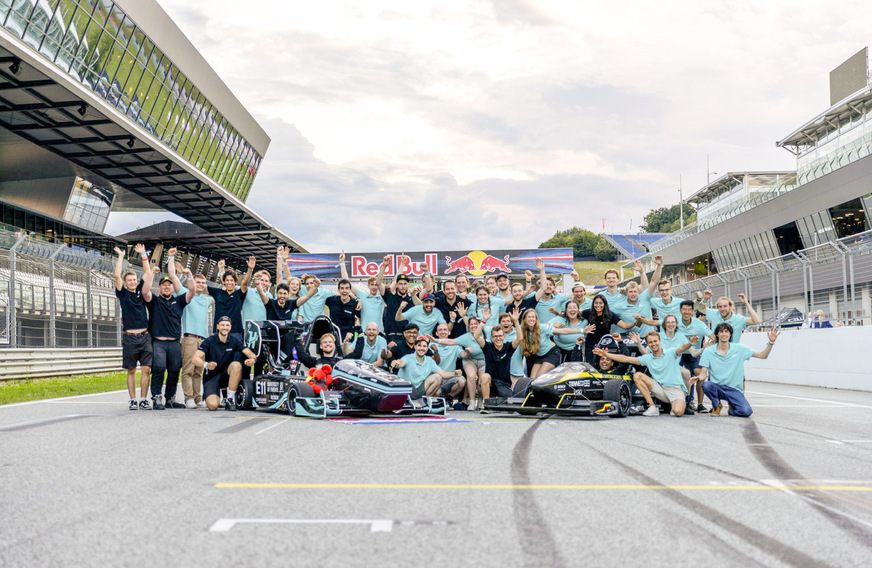
© FSA



